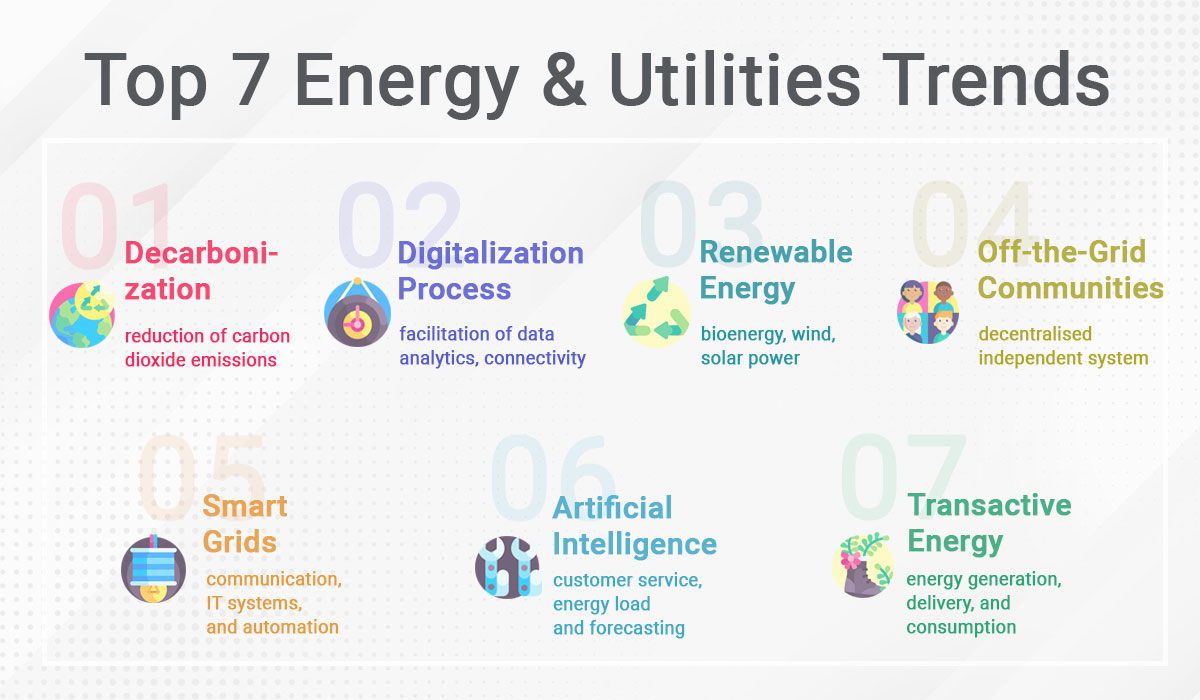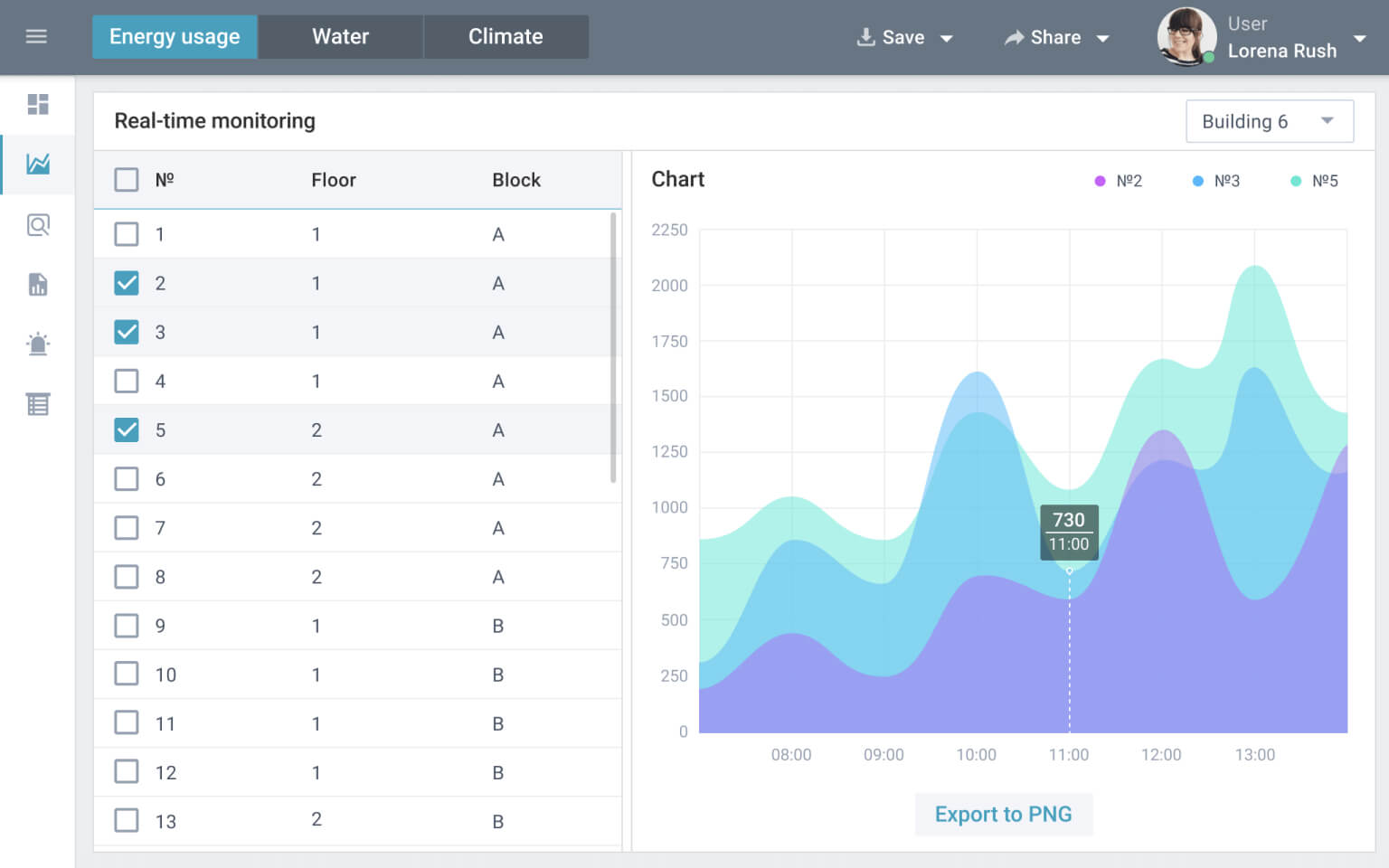Summary
The article outlines major transformations and challenges reshaping the energy & utilities sector — from decarbonization and digitalization to the rise of renewables, smart grids, and AI-powered energy management. It argues that to stay competitive and sustainable, companies must adopt advanced technologies, integrate data systems, and shift toward flexible, future-proof energy strategies.
The Energy and Utilities industry is an integral part of our day-to-day life, and it changes rapidly because of our ways of creating and using it. The possibilities of the future are endless, and it is up to us to make energy abundant and sustainable. Government investments in the next-generation energy technologies, various market developments, and new digital technologies that are constantly occurring nowadays help greatly to pave the way for the Energy and Utilities industry digital transformation.
That is why we can say for sure that software development services for the Energy industry are going to be modified soon as well. In today’s article, we will look at some examples of how the industry may change, which trends can be implemented in the future, and which ones are already in action.

1. Decarbonization
Global warming and ozone depletion are warning signs for the whole humanity, and more and more people acknowledge this fact. Companies all over the world are trying to find ways to make the Energy and Utilities industry a lot greener than it is right now. Decarbonization and digitalization are some of the technology trends that are taking place in the Utilities industry today.
Decarbonization is basically the reduction of carbon dioxide emissions. There are two ways that can be initiated in order to make this happen. The first one refers to the lowering of the output of greenhouse gasses into the atmosphere, while the second one requires the steps that will help in absorbing carbon and capturing emissions from the atmosphere. To put it simply, the reduction of the negative impact and the increment of the positive aspects are the key tasks of this trend. Coal and gas extraction, chemical and oil production, and other industrial, processing, manufacture, and transportation processes should be redesigned. Renewable options, on the other hand, have to be implemented.
Read Also How to Build an Efficient Waste Management Application
2. Digitalization
As for the digitalization, this is another process that also influences Logistics software development, IT solutions for Manufacturing industry, and other spheres. When talking about Energy and Utilities industry challenges, it is good for climate and power system resilience. The main principles of the digitalization include the increment of the availability of connectivity and an exhaustive dataset, facilitation of data analytics, as well as the promotion of data-driven decision making. It is the key to equitable energy transition.
According to the European Commission, certain objectives should be made in order to create a smarter and more interactive energy system than it is today. It is vital to start preparing for them now, because they may require newer ways of running your company’s software. In this case, application migration is what can improve your business.
3. Renewables
As we brought up the topic of renewables, let’s cover them more to understand why it is considered as one of the technology trends in the Utilities industry nowadays. Renewable energy technologies are the buzzwords of the last decade. Renewable energy comes from a source that won’t run out and helps to develop technologies that usually have less or no impact on our planet. The most popular sources that are used today include bioenergy, wind, hydroelectric, and solar power. It is possible for companies to use readily-available renewable energy software solutions that improve the collaboration between home team and the group of advisory experts as well as lessen the overall workload.
4. Off-the-Grid Communities
Off-the-grid community is a smaller and decentralized system that operates independently of the main grid. All over the world, people create this type of community, because they have the power to transform the energy networks we know today. They offer greater independence and stability than traditional offsite power stations and give consumers the ability to manage their own energy needs. Such a community also utilizes various renewables, sometimes with the use of a hybrid approach. Also, a diverse choice of logistics software can help their residents not to lose the connection with the outside world completely.
5. Smart Grids
Renewable technologies are really popular nowadays and are widely used with other Utilities industry trends, and smart grids are not an exception. The smart grid is a set of electricity networks that include communication, IT systems, and automation. With smart grids, it is possible to control the flows of power and monitor its way from the point of generation to the point of consumption. The communication between customers and utilities is smoother, because any malfunction or delay is detected faster and more effectively. You are able to integrate clean energy resources, collect, record, and adjust the information about energy consumption. In case of using smart grids, the savings in operating costs are significant.

Source: IoT Monitoring and Analytics System
6. Artificial Intelligence
This is one of the few technology trends that can be implemented in almost any sphere to scale up a business. Energy management software (EMS) can be greatly upgraded with this option, because Artificial Intelligence (AI) simplifies analytics and insights extraction and brings these processes to an advanced level. Customer service, energy load forecasting, and various inspection operations – all of these procedures can be boosted by an AI. The usage of drones that are powered by an AI is highly popular as well. This is the best binding asset between renewables, smart grids, homes, businesses, storage batteries, and other parties of the Energy and Utilities sphere.
7. Transactive Energy
Transactive energy is a multi-level communications technique that refers to the set of economic and control mechanisms that help in coordinating energy generation, delivery, and consumption. It is an effective way of sharing and trading energy among peers that can also be used for smart grids. With this method, it is possible to create a system that will be able to be automatically adjusted to balance the grid and quickly negotiate energy transactions between individuals. Anyone can generate electricity and trade it on the grid.
Read Also Smart Contract Benefits for Business
Conclusions
There is a huge variety of trends in the Energy and Utilities industry, and every business or community chooses the one that is suitable in each particular case. Sometimes, it is even more effective to use various technologies combined with energy management software. The world is ever-changing, so it is essential to think about the future and make it secure, sustainable, and smarter for everyone. We all have one home, so why not make it comfortable to live on?
If you need assistance in transforming your great idea into a successful solution or have questions about the services we provide, please contact us, and our experts will do the best to meet your needs.